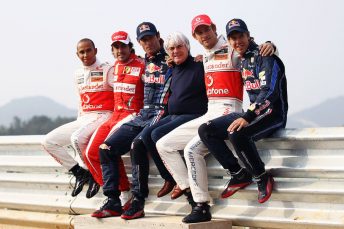
JAN TEGLER: The New Year is underway and as the Rolex 24 have just kicked it off, we begin another season of the Stefan Johansson column.
We’ll continue to discuss all that is fun, fantastic and occasionally frustrating on the global racing stage. We invite you to join us for what should be a very interesting year in Formula 1, IndyCar, sportscar racing and more.
Times are definitely changing in F1 with the ownership transfer of the series to Liberty Media and the departure of Bernie Ecclestone as F1 CEO. It’s the end of an era and the beginning of something different. Opinions on Ecclestone’s reign vary but two things are certain:
Bernie pushed the series forward to new heights and is the one person most responsible for what F1 has become in the modern era. He also the only leader the overwhelming majority of the F1 paddock has ever known – a figure central to the environment in which teams, drivers, circuits and manufacturers have functioned for decades. What are your thoughts on Bernie’s exit?
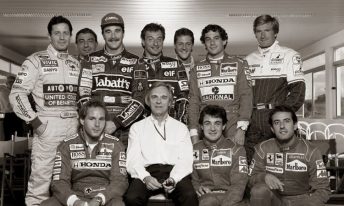 STEFAN JOHANSSON: Well, it was to be expected of course with the new ownership but it’s still a very major end of an era. Since any of us can remember F1 has been synonymous with Bernie. It seems like nothing in modern times in almost any capacity has ever happened without his involvement. Teams, drivers, promoters, TV, you name it – every little detail and every brick in that business has been laid by him.
STEFAN JOHANSSON: Well, it was to be expected of course with the new ownership but it’s still a very major end of an era. Since any of us can remember F1 has been synonymous with Bernie. It seems like nothing in modern times in almost any capacity has ever happened without his involvement. Teams, drivers, promoters, TV, you name it – every little detail and every brick in that business has been laid by him.
It was a weird feeling when I first heard of the announcement and talking with other friends from F1 it seems that everyone agrees that it’s kind of sad, he’s been like a grandfather to all of us. The change is definitely a big deal. I can’t think of anyone in the paddock now who was there before Bernie. It will be very interesting to see what happens. Personally I feel that Liberty might have been better off by keeping Bernie onboard for a few more years and ease into the ownership by learning or studying how things got done rather than cutting the cord and starting with a clean sheet right away. If I had the opportunity to work next to what is arguably one of the best deal-makers in history, not only in F1 but in general, I would certainly jump at the opportunity. The devil is always in the detail and Mr. E was the only one in that organisation that had an intimate knowledge of every little detail. Those are some big shoes to fill for sure.
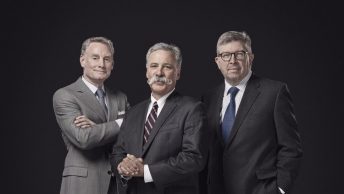 JT: Indeed they are. Liberty Media has a fairly impressive team. Chase Carey is now CEO while ex-ESPN executive Sean Bratches will direct the commercial side of the series. Ross Brawn returns to F1 with Liberty in charge of the sporting side of the series as managing director, motor sports.
JT: Indeed they are. Liberty Media has a fairly impressive team. Chase Carey is now CEO while ex-ESPN executive Sean Bratches will direct the commercial side of the series. Ross Brawn returns to F1 with Liberty in charge of the sporting side of the series as managing director, motor sports.
SJ: I think it’s great that they’ve got Ross involved on the technical and sporting side. You couldn’t find a better guy as he’s probably the only designer or engineer that also has a very clear and deep understanding of the business side of F1. Hopefully he will be able to simplify many of the things that have got far too complicated over the past years.
On the other hand, there’s been a lot of talk that everything needs to change. But I don’t think anyone really has the answer whether it’s on the digital side, the sporting side or the commercial side. What is the actual answer to all of this?
It may be easy to recognise what’s wrong but fixing it all is something else. That’s the critical part going forward. I’m not underestimating the people at Liberty Media. They’ve been extremely successful in everything they’ve done. And they’ve have already been smart enough to surround themselves with good people so one would hope that the right decisions will be made.
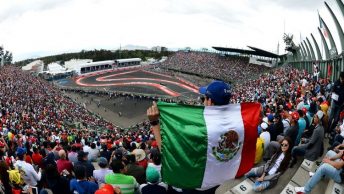 But I believe F1 is at a stage right now where if you make another two or three wrong decisions in important areas I don’t know how much longer it will be interesting or relevant for the fans – or for the teams too for that matter. Aside from the manufacturers, every team is on the limit financially already. With new rules again for this year the costs will certainly not go down, most likely they will increase yet again as all the teams had to start with an almost clean sheet as far as the chassis go. How do you control the costs? There are so many different aspects and at the same time you may not want to do too many things. Ross has already talked about a three- to five-year plan on the technical side, and that’s a good sign for sure.
But I believe F1 is at a stage right now where if you make another two or three wrong decisions in important areas I don’t know how much longer it will be interesting or relevant for the fans – or for the teams too for that matter. Aside from the manufacturers, every team is on the limit financially already. With new rules again for this year the costs will certainly not go down, most likely they will increase yet again as all the teams had to start with an almost clean sheet as far as the chassis go. How do you control the costs? There are so many different aspects and at the same time you may not want to do too many things. Ross has already talked about a three- to five-year plan on the technical side, and that’s a good sign for sure.
But then there’s all the other commercial aspects of the business that needs to be dealt with. I don’t think anyone truthfully has the correct answer or the right way forward in this area simply because things are changing at such a high rate today. It’s very tricky to say the least. All sports are dealing with the same problems. People were quite happy to sit through a two- to three-hour sporting event in the past, because it was the only game in town. Not so anymore, except for the very big events like the Superbowl or the Soccer World Cup for example.
JT: Chase Carey made the comment that he wants every race to turn into a “Superbowl” with the event starting the week prior to the Grand Prix. Do you think there is enough interest in some of the markets to make this work?
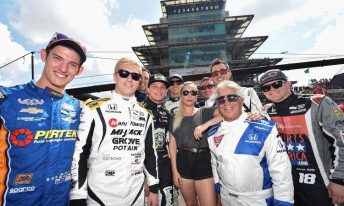 SJ: We have two very definite Superbowl equivalents in motor racing already, the Indy 500 and the Le Mans 24 hours, they are both massive events. Monaco probably falls into the same category although they can’t pack in the same amount of people due to the sheer size of the venue as they do at Indianapolis in particular. I don’t know how well they have studied each individual market but in some other places it is already like a Superbowl kind of atmosphere. The build up is starting very early and the entire city comes alive when the GP comes into town. Montreal for example is a great example of this, there’s an incredible atmosphere there; Singapore, Monaco and some others too.
SJ: We have two very definite Superbowl equivalents in motor racing already, the Indy 500 and the Le Mans 24 hours, they are both massive events. Monaco probably falls into the same category although they can’t pack in the same amount of people due to the sheer size of the venue as they do at Indianapolis in particular. I don’t know how well they have studied each individual market but in some other places it is already like a Superbowl kind of atmosphere. The build up is starting very early and the entire city comes alive when the GP comes into town. Montreal for example is a great example of this, there’s an incredible atmosphere there; Singapore, Monaco and some others too.
But there is generally a common denominator in all these cases and it’s the location of the track. If the track is located in a major city or very nearby it sort of just happens organically. But, when you have to drive for an hour or more and the hotels near the track are spread over a 100 mile radius it’s difficult to get a Superbowl atmosphere because there is no focal point. And this is the problem with a lot of the venues on any racing calendar. IndyCar is exactly the same, all the city races are huge, with large crowd and great atmosphere. As for the TV numbers I am not sure they would get anything close to what they have for the Superbowl if there was one every two weeks in F1. It’s a completely different thing and maybe that’s partly what’s lacking in F1. Monaco is for sure more prestigious to win than any other Grand Prix, but it’s nowhere close to Indianapolis or Le Mans in terms of the amount of spectators or the build up beforehand.
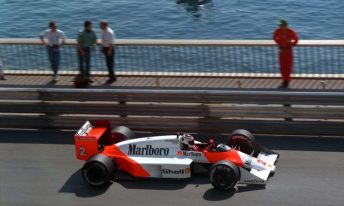 JT: In comments earlier this week, Liberty commercial chief Sean Bratches outlined four areas that the organisation will prioritise to improve the sport. The third concerns the approach Liberty will take to managing the series.
JT: In comments earlier this week, Liberty commercial chief Sean Bratches outlined four areas that the organisation will prioritise to improve the sport. The third concerns the approach Liberty will take to managing the series.
“The third is creating a much more democratic approach in terms of how we approach our partners – from teams/sponsors/promoters and rights holders. There is a lot of opportunity to leverage the F1 IP to integrate it to their businesses,” Bratches said.
Given the view you’ve often expressed about the inefficiencies that result when F1 is ruled ‘by committee’, what do you think of Liberty’s notion of a “much more democratic approach”?
SJ: If you look at any championship that’s been run like a democracy, it’s failed. I think that’s true of most sports in general. I think there will be so many opinions that, again, it will be hard to get things done. But this is the ‘romance period’ for the new establishment. We’ll see how it goes.
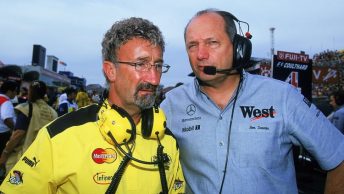 Since F1 implemented a somewhat more ‘democratic’ approach through the Strategy Group there seems to be more confusion and more complicated rules every year. So far, they have not accomplished anything that has made F1 better as far as I’m aware. I absolutely think they need to get away from this democratic approach and instead put together a small team of individuals that are highly respected by their peers, that understand the different aspects of the business and are completely independent from the pressure of running a team or promoting a race or anything else that will give them a biased view of how to run the business. You then need to let them get on with formulating a plan to go forward.
Since F1 implemented a somewhat more ‘democratic’ approach through the Strategy Group there seems to be more confusion and more complicated rules every year. So far, they have not accomplished anything that has made F1 better as far as I’m aware. I absolutely think they need to get away from this democratic approach and instead put together a small team of individuals that are highly respected by their peers, that understand the different aspects of the business and are completely independent from the pressure of running a team or promoting a race or anything else that will give them a biased view of how to run the business. You then need to let them get on with formulating a plan to go forward.
If they let everyone have their view on every single matter it will end in disaster just as we’ve seen in so many other series and sports for that matter. I don’t think the guys at Liberty has any idea of what’s in store for them when it comes to dealing with the teams in particular. The best analogy would be to use the famous quote from Ron Dennis when Eddie Jordan entered F1 back in the 1980s, “Welcome to the Piranha Club”. Nothing has changed since then and that is exactly what they can expect.
JT: Drivers have now started to opine that the new 2017 cars will not only be faster but much more physical to drive with higher loads to be withstood. That’s why many have said they have stepped up their off-season physical training. In addition, many including current and former drivers are finally acknowledging what you spoke out about half a year ago – namely that the increased downforce of the 2017 cars may actually make passing even more difficult in F1.
SJ: Unless I’ve completely missed something, I can’t see how the new cars will make the racing better. I’d love to be proven wrong, seriously, but I don’t understand how it’s possible.
It was already difficult enough to pass in recent years because braking distances are already so short. With the current cars they are almost in the corner when drivers hit the brakes. They are now talking about a 40km/h increase in cornering speed with most likely even slower straight-line speeds due to increase in drag from the added downforce, which means they will literally be in the corner when they brake. Unless I’m mistaken, braking into a corner is generally where most passing takes place, unless you’re on an oval track and you can run multiple lanes. Maybe these cars will have so much grip that they can run two lanes. That’s the only way I can see any passing happening.
Your exit speed from a corner will be completely irrelevant because, relatively, there will be so little acceleration taking place with a 40km/h higher exit speed on average. That means your acceleration will be even less than currently from corner exit to the end of a straight.
Apparently the FIA has already informed the track owners that they will have to modify the run off areas in some places due to the increase in cornering speeds. In fact, what is happening is that the cars have now outgrown nearly every track. With such an increase in grip and cornering speeds there is virtually not one challenging corner left on the calendar. The engineers are already talking about several corners or sections on many of the tracks being straights, as in there will be no lifting or braking as it used to be before. For example, I expect Eau Rouge at Spa to be flat on the second lap out in first practice, it will literally hardly be a corner anymore. The only place where a driver will be able to make any difference in the lap times will be in the low speed corners, and it will be even more about technique and just hitting your marks than it already is. Bravery and being able to ‘hang it out’ won’t enter into the equation anymore.
JT: All this talk about the drivers having to be super fit this year, what are your views on that?
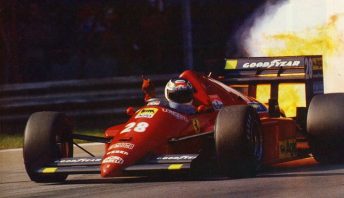 SJ: I don’t think it will be anything near as hard as everyone thinks or is talking about. By the time they get to the first race they will all have gotten used to it. They’re certainly not going to pull more Gs than what an IndyCar already does on an oval track. And the guys in IndyCar don’t complain too much about that. All of this is completely blown out of proportion in F1 as far as I’m concerned. The other thing is that the IndyCars don’t have power steering so they are way more physical to drive than an F1 car will ever be to begin with.
SJ: I don’t think it will be anything near as hard as everyone thinks or is talking about. By the time they get to the first race they will all have gotten used to it. They’re certainly not going to pull more Gs than what an IndyCar already does on an oval track. And the guys in IndyCar don’t complain too much about that. All of this is completely blown out of proportion in F1 as far as I’m concerned. The other thing is that the IndyCars don’t have power steering so they are way more physical to drive than an F1 car will ever be to begin with.
In any race car these days you’re literally glued into the seat. The only things that should move are your arms and anything from the knees down and maybe your core to some degree. But your head is literally stuck in one position now because the head-rest surrounds you and you have the Hans-Device. I don’t see what the fuss is all about.
When your head was sitting a foot above the cockpit like it used to be, you really had to use your neck muscles to hold it up. Now you just brace against the head-rest and you’re fine. And in F1 it’s still nothing like the oval in Phoenix in an IndyCar for example, where you race with monster Gs lap after lap for 200 laps.
And generally speaking I think all drivers today are very fit to begin with, much fitter than they used to be and they have much more sophisticated training methods and better diets. I don’t think we will hear a word about the physical aspect after a couple or races.
JT: Valtteri Bottas has been confirmed as Nico Rosberg’s replacement at Mercedes GP since last we talked. Mercedes made quite a few deals to bring him to the team. What’s your view on his potential?
SJ: Signing him was the obvious thing to do, I guess. We’ll see how it goes but now it’s time for him to shine and become a real superstar, or fall by the wayside if he’s not able to match or beat Lewis. It’s the same for all of these guys in mid-pack teams. It’s easy to be a kind of underdog and do a great job and be recognised every time you do a good job and succeed.
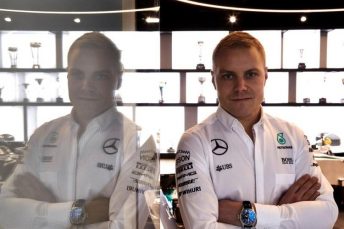
Valtteri Bottas, Mercedes-AMG Petronas Motorsport;
And when on occasion you do an average job, it’s still okay. If you have an ‘off’ weekend, finishing seventh instead of fourth – which has certainly been the case more than once for Bottas – it’s not that big of a deal. When you’re in Mercedes, Red Bull, Ferrari or McLaren, you’re not allowed to have an ‘off’ weekend. In a top team there’s a completely different dynamic. You better be on your A-game in every race and every practice session. If you’re not people immediately start to ask, “What’s wrong with him?”
They say you’re ‘finished’ and this and that, and the media is all over you. The team is on you, everybody’s on you all the time. You’ve got to be at the highest level every time you step into the car. I think that will be the biggest eye-opener for Bottas. He is no doubt a super talent but trying to beat Lewis every time out won’t be easy for anyone in the paddock, we have already seen that with Alonso, Button and Rosberg. All those guys are the best in the business.
JT: Adrian Newey and Red Bull Racing seem to be more optimistic heading into the 2017 season, declaring that Renault has made progress with its power unit and that the Red Bull chassis – already well developed – will benefit from it.
 SJ: I think Red Bull will be the biggest challenger to Mercedes. I don’t think the gap to Mercedes will be as big because the huge advantage they’ve had with their engine is getting smaller. I think they’ll still have a slight advantage but whoever gets their new chassis right will be much more competitive with them and I think Red Bull will be very strong. I have a feeling McLaren will catch up quite a bit too. Ferrari is an unknown at this point, I hope they will surprise everyone and maybe the silence from Maranello is a good sign.
SJ: I think Red Bull will be the biggest challenger to Mercedes. I don’t think the gap to Mercedes will be as big because the huge advantage they’ve had with their engine is getting smaller. I think they’ll still have a slight advantage but whoever gets their new chassis right will be much more competitive with them and I think Red Bull will be very strong. I have a feeling McLaren will catch up quite a bit too. Ferrari is an unknown at this point, I hope they will surprise everyone and maybe the silence from Maranello is a good sign.
JT: You’ve said repeatedly in the past that despite all the resources invested, F1 cars all end up looking almost identical even after a rules change. Do you think that will be true this season?
SJ: To a large degree I think they will. The window of what teams are allowed to do is so small now that by nature they’ll all end up looking the same. There’s really no room for innovation anymore. They work in such a narrow box that it’s mostly down to the endless tinkering with the details. I noticed from what I’ve seen until now that the complicated front wings will remain more or less the same, which effectively means that any hope of a car being able to follow the car in front close up is no different from before. I thought one of the reason for increasing the aero from underneath the car was to avoid this from happening, but this will not be the case, unfortunately. As long as the main area of performance on the car is aerodynamics it’s inevitable that all the cars will eventually look nearly the same, the air only like to travel in a certain way and that ultimately determines the shape of the car.
JT: One thing not yet discussed by Liberty Media is what they might do to control costs in F1. They have proposed more evenly distributing money among the teams but that won’t help much if F1 remains unsustainably expensive. The sums spent by manufacturers, teams, etc in F1 these days are staggering yet no one seems to blink an eye or has the courage to try to control it. How is it possible for this to be ignored?
SJ: Yes, distributing money more evenly is fine but when costs are already through the roof it doesn’t help much. And with frequent rule changes you add even more expense. The best way to keep costs down and make the racing more exciting is to maintain rules stability. The ramp up in costs is always at the beginning of a new rules package for obvious reasons as every team has to develop a whole new car effectively. The longer you have the same set of rules the more the lower ranked teams will catch up and the closer the field will be and the costs will eventually drop for all teams as the trade-off between performance versus money spent decreases each year.
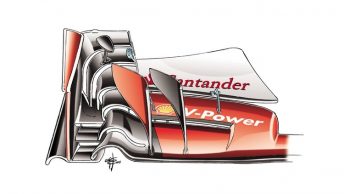
To make the competition closer and to control costs, more than anything, I think you need to limit what teams are allowed to do with the cars. I firmly believe that you could standardise 50 to 60 percent of the components. That eliminates the need to design, manufacture and build every single component of a car. All those components have to be run and tested, and now with limits on testing it becomes even more expensive as they have to be simulated and tested in different way which adds even more cost.
I keep repeating the same thing over and over, the biggest culprit is the aerodynamics. They must figure out a way to minimise the importance of downforce on the car, or at least simplify what you’re allowed to do on the car. I don’t see why they can’t use the same front wing on all the cars for example, issued and controlled by the FIA. No one can hardly notice the difference between any of the cars as it is now, yet they all produce their own front wings at an astronomical cost to each team, with a wind tunnel and CFD programs that never ends, literally. It’s a constant 24/7 development war that never stops all year long, to find the tiniest gains. One of the top teams employ a total of 250 staff in the design and engineering department, of which half are aerodynamicists. I am baffled why they can’t all agree on this as a starting point at least.
JT: On a lighter note but also a serious one, racing in general is facing an unprecedented level of competition from other sports and new forms of entertainment. As you observe there are lots of distractions and some are a good laugh.
SJ: Fernando Alonso made a comment about the eighties era recently, saying that people would find it boring nowadays watching those races with Prost and Senna fighting each other. He’s 100 percent right of course. But the difference is that’s all there was back them. People could understand the challenges and dangers, the spectacle. They looked up to the drivers as gladiators and thought it was fantastic. The cars were beasts and fans could see that when they were watching. But the racing was generally quite boring in fact, even more than it is today I would say.
Today, there is so much clutter and competition for eyeballs from so many different sources, especially for the younger generations which makes it hard for anyone to sit through a two-hour race that have very little happening most of the time. Compare that to something as silly as watching these ‘fail’ videos that are so popular now on YouTube for example with these morons from all over the world wrapping their Lamborghinis and Ferraris around a tree or a lamp post. Well I hate to admit it but it can be quite entertaining too at times.
It’s a silly example and as funny as that is to say, it’s true. And it can be anything. Whatever people are into, there’s instant access to as much as you want – complete sensory overload. So, in my opinion, whatever needs to be done to increase the interest from the younger generation in F1, and racing in general, it has to be something really special. It has to be something really spectacular like F1 is supposed to be, and even more. It can’t be politically correct all the time. It has to be something that people can easily understand as extraordinary and special. F1 isn’t that way at the moment.
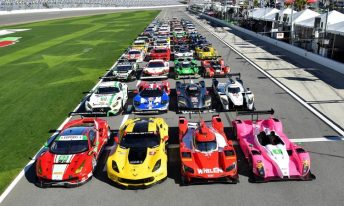 JT: With the Rolex 24 a new era started in sports car racing with IMSA’s DPi and the global P2-spec.
JT: With the Rolex 24 a new era started in sports car racing with IMSA’s DPi and the global P2-spec.
SJ: We’ll see how it all shakes out. The cars at Daytona looked fantastic in my opinion, both the DPis and the LMP2 cars. The racing was good and I think this format could be the way forward for prototypes in general. Let’s hope the ACO will take a good look at this with an open mind and allow the same type of cars to run the 24 hours too eventually. With only two teams or manufacturers that can effectively win the 24 hours I think it’s time to re-evaluate the entire format for the ACO and the Le Mans 24 hour race.
JT: The 2017 IndyCar season is on the horizon. Much of the off-season talk has centred on the series aero kit ‘freeze’ this year and its intention to go to a ‘universal’ kit in 2018, a configuration that may see IndyCars generating more downforce from underneath the chassis. The move to make downforce from below is intended to reduce turbulence for following cars. What are your thoughts on these moves?
SJ: Well, moving to the kit for 2018, even if you try to make downforce from under the car instead of from the top I don’t think it will completely eliminate the problem. You might improve things a bit but you’re still going to have a high downforce configuration. Whatever the ratio is between aero and mechanical grip, you’re going to have a problem if the aero portion is greater than the mechanical no matter what.
Right now, the dependence on aero with an IndyCar is probably 80 percent or more. The cars have a crazy amount of grip. If they got rid of a lot of the aero appendages that are all over the cars and cleaned them up it would be a big improvement.
 I think the best, and only way, to solve this problem for any type of open wheel car is to drastically reduce the downforce and rely more on mechanical grip and more horsepower to get the lap-times to the same levels we have now. This would put the emphasis back on the drivers and car control which is key in my opinion.
I think the best, and only way, to solve this problem for any type of open wheel car is to drastically reduce the downforce and rely more on mechanical grip and more horsepower to get the lap-times to the same levels we have now. This would put the emphasis back on the drivers and car control which is key in my opinion.
It’s the same as in F1. Why spend all of this money on aerodynamics when you can have the tyre companies give you the grip and engine manufacturers make the engines more powerful? They are both very easy things to do, and at virtually no development cost to the teams or certainly nothing close to what they are spending on their aero programs at the moment. If you had multiple tyre suppliers they would duke it out and spend as they used to, to develop better tyres. The lap times would drop by four to five seconds almost immediately and probably a lot more with time. That would at least have some level of benefit for street tyres too as some of the technology is eventually applied to their consumer products. Aerodynamic downforce is about as useful as an ashtray on a motorcycle for anything else but making a race car go faster.




















Discussion about this post